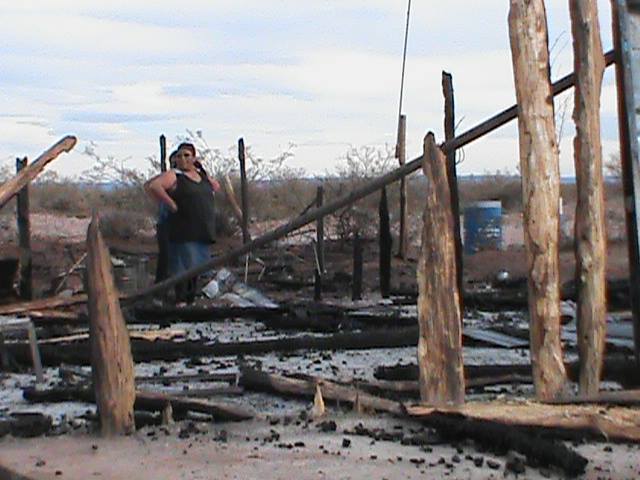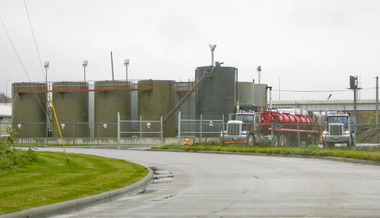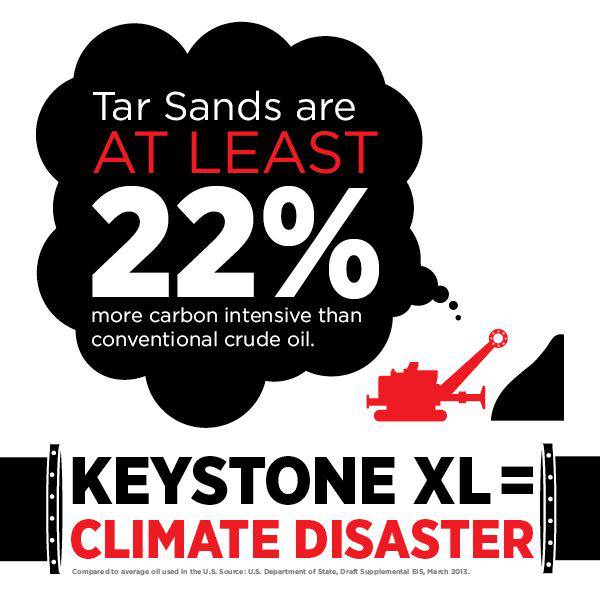http://www.wilderutopia.com/environment/energy/regulating-fracking-will-not-protect-california-from-fracking/
BY THE OUTPOST – POSTED ON AUGUST 9, 2013
POSTED IN: ENERGY
Lauren Steiner writes on California’s insufficient move to regulate fracking with SB 4, sponsored by State Representative Fran Pavley: “Worse than having no regulations, weak regulations provide political cover to legislators who could otherwise be pressured to vote for a moratorium on the practice.” Tell Fran Pavley to withdraw her bad regulatory bill and fight for a fracking ban instead! http://bit.ly/15huBIm and rally Monday, August 12 at her office to deliver signatures in Calabasas, CA. RSVP: http://on.fb.me/19OCP2n
Rally in downtown LA from Californians Against Fracking. 58% of Californians want a moratorium on fracking. The state Democratic Party, the majority party, passed a resolution calling on legislators to impose a moratorium. Activists were also able to get two strong moratorium bills introduced in the legislature. Only one made it to the full Assembly. Had 18 Democrats voted “yes” instead of abstaining, the bill would have passed. Photo By Jack Eidt.
California’s Fracking Regulatory Bill: Less Than Zero
By Lauren Steiner, Published in Common Dreams
A year after buying his dream home in Los Angeles, Gary Gless started falling down and breaking bones. Fourteen years and one thousand doctors visits later, his neuromuscular disorder hasn’t been specifically diagnosed. He survives on painkillers and sleep aids.
Gless’s backyard overlooks the Inglewood Oil Field, the largest urban oil field in the nation.
Within the field, gas companies have been secretly hydraulic fracturing, or fracking, in the middle of this community of 300,000 residents for nine years. Many of Gless’s neighbors also suffer from neurological, auto-immune and respiratory diseases and several types of cancers. Many have died. Homes and swimming pools are cracking.
None of these people will be helped by passage of the only fracking bill still alive in California’s legislature: Senate Bill 4. That’s because the regulations in SB 4 do nothing to actually make fracking safer. Instead, the flawed bill sets up a process for notification, disclosure, monitoring and permitting and simply calls for future regulations by other agencies and a scientific study.
Telling someone when you’re going to frack, where you’re going to frack and what chemicals you will use, is like a murderer telling you he’s going to shoot you on your front porch at noon tomorrow using an AK-47. At the end of the day, you’re still dead.
The State of Play
Worse than having no regulations, weak regulations provide political cover to legislators who could otherwise be pressured to vote for a moratorium on the practice. 58% of Californians want a moratorium on fracking. The state Democratic Party, the majority party, passed a resolution calling on legislators to impose a moratorium.
Activists were also able to get two strong moratorium bills introduced in the legislature. Only one made it to the full Assembly. Had 18 Democrats voted “yes” instead of abstaining, the bill would have passed. When asked why they didn’t vote for a moratorium, many said they were planning to vote for SB 4 instead. Passage of this bill will remove the regulatory uncertainty currently surrounding fracking. It will give the green light to Big Oil to frack the Monterey Shale, the largest oil play in the nation holding nearly 2/3rd of all US reserves. This bill must be stopped.
Aerial view of the Baldwin Hills oil fields in Los Angeles – the largest contiguous urban oil field in the U.S. Gas companies have been secretly fracking in the middle of this community of 300,000 residents for nine years. Photo from Transition Culver City.
A big fat compromise
SB 4 – just like the Illinois fracking regulation bill passed in May – will probably be hailed as the strongest fracking regulatory bill in the country. But even the bill’s sponsor, State Rep. Fran Pavley, calls this bill a compromise. “We’re trying to put regulations in place that will address public concerns,” Pavley said in an April interview. “This bill does not place a moratorium on the process. It will go on. I consider this a compromise measure.”
Although industry representatives testified against the bill, they tempered their criticisms. It’s an indication this bill is seen as preferable to those placing a moratorium on fracking. “I’ve told the oil companies that the public is going to go there if it thinks they have something to hide,” she said, suggesting that lack of legislative action could potentially lead to a ballot initiative to ban fracking in California.
Big Oil also loves the “big fat compromise.” “It is in our best interest that we have disclosure,” said Western States Petroleum Association’s spokesman Paul Deiro. “To calm the fears that are out there is in our interest, because we believe it’s a safe technology.”
Dissecting the Bill
Fran Pavley is known as an environmental hero for authoring the Global Warming Solutions Act and the Clean Car Regulations. She accepts no money from Big Oil and is considered by many “the best friend environmentalists have in California.” Platitudes aside, this bill does no favor to the environment or to public health.
While proclaiming to provide full public disclosure of fracking chemicals, exceptions are provided for “proprietary trade secrets.” As Kathryn Phillips, legislative director of Sierra Club California states, this would be “the first overt statutory recognition in the nation that fracking fluids qualify for trade secret protections. This would set us back, not forward, in our efforts to make sure that fracking in this state does not harm public health and the environment.” For this reason, Sierra Club opposes this bill, as do Food and Water Watch, Physicians for Social Responsibility and most of the other organizations in the coalition Californians Against Fracking.
Furthermore, we already know the chemicals used in fracking. They were disclosed to the Pennsylvania Department of the Environment and the US House Energy and Commerce Committee. Of the thousand of possible products frackers use, 650 contain chemicals that are known toxins or carcinogens.
In the Inglewood Oil Field, the operator also released the list of 40 chemicals used. They include benzene, toluene, lead, mercury, hexavalent chromium, and formaldehyde, all known carcinogens. As to the notification, giving someone 30 days notice before doing a frack job is not much comfort. Making matters worse, groundwater monitoring is to be conducted by the oil company, a classic case of the fox guarding the hen house.
A permit would be denied if it presents “an unreasonable risk.” We already know that fracking fluid includes multiple carcinogens and the re-injection of fracking wastewater causes and exacerbates earthquakes. Are these considered reasonable risks? If so, what risk would fracking have to pose before this bill would prohibit it? The bill also directs other agencies to make regulations, failing to specify what those regulations should be. No regulations can prevent leaks. 6% of wells leak immediately; and 50% leak within 20 years. If the industry could make well casings leak proof, they’d do it. It’s their own valuable product that is lost.
The bill calls for an independent scientific study on the effects of fracking. Originally, the bill said if the study were not completed by January 1, 2015, there would be a moratorium on all new fracking. But Pavley was pressured to remove the moratorium provision from the bill.
“We already know that fracking fluid includes multiple carcinogens and the re-injection of fracking wastewater causes and exacerbates earthquakes.” Hydraulic fracturing operation near private homes in Wetzel County, West Virginia, November 2012 (photo by SkyTruth; aerial overflight provided by LightHawk).
Learning from History
Although an independent study sounds better than one conducted by the industry, many “independent” studies are done by firms so entrenched in the oil industry they can’t risk losing future business. Such is the case with the last two State Department studies on the Keystone XL Pipeline.
Many studies are victims of the political winds of the day. “Gasland Part II,” outlines three EPA studies that proved fracking was contaminating groundwater in Dimock, PA, Pavillion, WY and Parker County, TX. As soon as President Obama announced in his State of the Union Address that fracking – utilizing American Petroleum Institute talking points – was to be the centerpiece of his national energy policy, those studies were all scuttled within the next year.
Plenty of independent studies already exist, further calling the rationale for the need for “more studies” into question. Duke University 2011, 2012, and 2013 studies all linked methane contamination of groundwater in Pennsylvania to fracking. Another study from the University of Texas found elevated levels of lead and other heavy minerals close to natural gas extraction sites in Texas. A Colorado School of Public Health study found fracking increases cancer risk, contributing to serious neurological and respiratory problems in people living near fracked wells. Fracking’s brief history in the U.S. shows one thing clearly: it creates havoc wherever it goes.
Regulations: Only as Good as the Regulators
In states where there are regulations on fracking, they aren’t enforced either by design, or because agencies are both underfunded and understaffed by state governments often bought and paid for by Big Oil. Worse, when fracking violates existing regulations, many states simply change the regulations to the benefit of Big Oil. In Colorado, the Air Quality Control Board is being directed to increase the allowable air pollution because of the air pollution caused by the fracking boom.
If you say that can’t happen here in California, look what’s already happened. Democratic Party Gov. Jerry Brown actually fired the head of Department of Conservation and the head of its Division of Oil, Gas and Geothermal Regulation (DOGGR) for pushing for tougher permitting requirements. Brown said the firings were because DOGGR was “steadfastly blocking oil production permits,” citing the state’s need for “a healthy and vibrant oil and gas industry.”
The move was hailed by then State Senator Michael Rubio from Shafter, a community being devastated by fracking. “We have worked diligently with the governor’s administration to reduce the roadblocks for the oil and gas industries to receive permits,” Rubio said at time. Less than a year and a half later, he resigned to take a position in government affairs with – wait for it – Chevron.
When regulations are enforced, fines are so low, they are written off as a “cost of doing business.” In Shafter, Vintage Oil, a subsidiary of Occidental Petroleum, flared off gas – a by-product of fracking – for two months. This created constant noise as loud as a jet engine. Five tons of nitrous oxide and two tons of volatile organic compounds were released into a community with the worst air quality in the state. This clearly violated the Air Board’s regulations. Vintage’s big penalty? $750.
Don’t expect any stronger regulations or enforcement of existing ones to come from Governor Brown. He has already accepted $27,200,the maximum donation allowed, from Occidental Petroleum for his re-election campaign. Big Oil is the biggest spender in California politics. The Western States Petroleum Association has already spent $2,308,790 on lobbying efforts in the first half of this year.
Plus, Brown is salivating over the tax revenues he expects from this oil boom. “One wonders whether there might be the ingredients of a grand bargain – the oil industry is given the green light to develop Monterey shale with some stringent but not crippling regulation, in return for which the state could impose a severance tax on new production that would benefit state and local governments,” Dan Walters pondered in a recent column in the Sacramento Bee.
Regulations can neither prevent nor mitigate the disastrous consequences inherent to fracking. We need to keep the carbon in the ground. Rep. Pavley should withdraw her regulatory bill and fight for a ban instead. Photo By Jack Eidt.
Ban It
Even if regulations could magically make fracking safe, it uses too much water in a drought prone state. The hundreds of daily diesel truck trips will also cause extensive damage to local roads and increased incidences of asthma and other respiratory diseases.
Fracking causes the industrialization of bucolic landscapes and noise and light pollution. In other states, fracking’s “man camps” are rife with drugs, alcohol, gambling and prostitution. Fracking would also most likely decimate the food and wine industries, which are far more important economically to the state than oil. The oil will not always even go toward energy independence – despite the popular refrain- as it will be exported to the highest bidder, predominately Europe and Asia.
Finally, fracking all that oil out of the Monterey Shale will accelerate climate change. According to climate blogger RL Miller, the CO2 released from burning it will be almost as much as that released by the Keystone XL Pipeline. Coming full circle, this will prevent California from achieving the 20% reduction in CO2 called for in Pavley’s signature bill, the Global Warming Solutions Act.
Regulations can neither prevent nor mitigate the disastrous consequences inherent to fracking. We need to keep the carbon in the ground. Pavley should withdraw her regulatory bill and fight for a ban instead.
Lauren Steiner is an environmental activist based in Los Angeles. Follow her on twitter: @Lauren_Steiner
_____________
https://www.facebook.com/events/275225295946227/
Big Oil will be coming to Downtown Los Angeles for the huge Western Summit Petroleum Conference on Tuesday, September 3rd, 2013 and we invite you to join us to be IDLE NO MORE against the destruction they promote leading us into climate disruption and health consequences to our communities.
These corporations have long been notorious for exploiting Indigenous Peoples and their sacred land so that they may unfairly claim natural resources to profit from to feed their greed and destroy the planet in one dark destructive process. Be sure that the consequences are not limited to Indigenous Peoples, since the environmental destruction knows no borders and makes its way well into all communities in some form destroying our quality of health and life. In the face of the current issue of the Keystone XL pipeline being proposed across Indigenous lands in the United States, The destruction of Tar Sands in Canada, and the many other exploitative projects on Turtle Island/ The Americas and world wide, we are ready to keep building this movement to shut down Big Oil. Lets DISCOVER OUR AGENCY to protect this sacred land that is this earth upon which we all depend to be healthy so that our communities and future generations may rise into a healthy existence.
Link to Pacific Oil Conference & Trade Show : Western Summit
http://petroshow.com/POC/Home/POC/Default.aspx?hkey=46671e0a-f58b-43a1-9a25-3afce8051a8e
Links to more info on the destruction being caused by the petroleum companies:
http://www.tarsandswatch.org/
http://www.tarsandsblockade.org/
http://nokxl.org/



